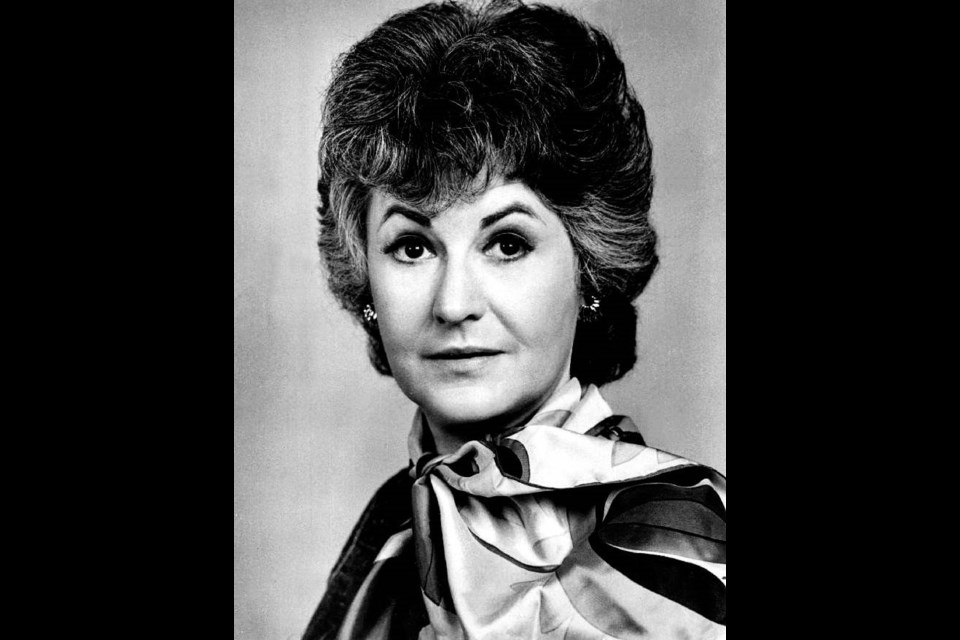I just spent a delightful week teaching writing to a lovely, intelligent group of children on their spring break. We had a very animated, enthusiastic debate on the relative benefits of writing with paper and pen versus email, texting or other technology (either way, I see Canada Post is encouraging us to send messages by snail mail).
One witty reason presented for preferring paper was that you could make the excuse “the dog ate my homework,” but the rebuttal was equally clever: “The cat walked over my keyboard and everything was deleted.”
My personal preference is paper. I love writing letters and cards by hand, although a good chunk of time must be set aside for this endeavour. For me, it all about aesthetics and a leisurely, thoughtful way to express one’s news.
The first letter I wrote, apart from my weekly news to Gran, which began as soon as I could write, was a fan letter to Beatrice Arthur — do you remember her program called Maude?
Believe it or not, she wrote back, all the way from Hollywood (backhand, using a big blue felt pen on cream-coloured Maude stationery). Imagine her writing to a lonely little girl in Fredericton, New Brunswick. I will keep her letter forever, and one of my small regrets is that as an adult, I never wrote to thank her for how her kind gesture thrilled me (she died in 2009).
Letters, as we know, are a dying art, but I have discovered a wonderful book of letters that I highly recommend, both for your reading pleasure and as a unique perspective on Canada.
Canada, A Portrait In Letters by Canadian historian Charlotte Gray (2004, Anchor Canada) was a national bestseller and is a thick, but fascinating, read, full of historic as well as contemporary correspondence. Maps, diagrams, illustrations and photos accompany many of the letters (including the back-and-forth banter with sketches of our maple-leaf flag), and Gray’s interesting, informative introductions preface each piece of writing.
Divided into four time periods between 1800 and 2000, this book tells the history of Canada through written communication.
There are letters from immigrants, nurses, fishermen, politicians, feminists, farmers, homesick soldiers, scientists, writers, lovelorn couples and explorers, including a lengthy 1822 letter from Sir John Franklin, leader of the ill-fated Franklin expedition. Oh what hell he describes as he and his men freeze in the Arctic and have to eat lichen off the frozen rocks, which gave one member of the party “severe bowel complaints” as they trudged across the vast north.
In 1800, Dr. John Caleff from the tiny towns of Saint Andrews and St. Stephens along the southern coast of New Brunswick writes to a military authority up north in Fredericton about administering the new smallpox vaccine: “The people of St. Stephens keep a constant guard against any persons going among them that may endanger their taking the Infection, they say it would ruin their sawing and fishing industry …” (a little bit of history repeating itself?).
One of the most memorable letters, written in 1898 and described by Gray as “one of the most blatant exercises in maternal manipulation,” is from Isabel Mackenzie King to her son, future prime minister William Lyon Mackenzie King, when “Willy” was young and ambitious and attending Harvard, and announced that he planned to marry a German woman a bit older than himself.
Isabel reacted with an extremely intense letter listing all the reasons that he must support his family instead. “No Billy, there is lots of easy flesh … I have built castles without numbers for you … I am getting older now Willy and disappointment wearies and the heart grows sick … I think charity begins at home … you who have such a big heart will not forsake me … I am afraid that these Harvard young men have contaminated you but, when you come to your sense, you will look at all things in the light we do …”. Gray adds that his engagement subsequently “crumbled.”
Do you recall the period in the late 1970s when Joe Clark ran for prime minister and his feminist wife caused many a ruffle — mostly among conservative men — by insisting that she be called Maureen McTeer rather than Mrs. Joe Clark? James F. Hutchinson wrote a letter to the editor of the Globe and Mail. It was around the time that Margaret Trudeau posed in a skimpy blue bathing suit and was smoking pot in New York.
Hutchinson wrote: “ … and now we have Joe Clark’s wife, whatever her name is. When we had W.L.M. King and R.B. Bennett things were so peaceful. I think now it was because they didn’t have wives.” And wait until you read the notes back forth from Ottawa about dance-hall girls in the Yukon (“dance halls are an evil …”).
Letters tell much about our times. Why not write an Easter card and send it snail mail this year? In 50 years, people might be aghast at what you say!



